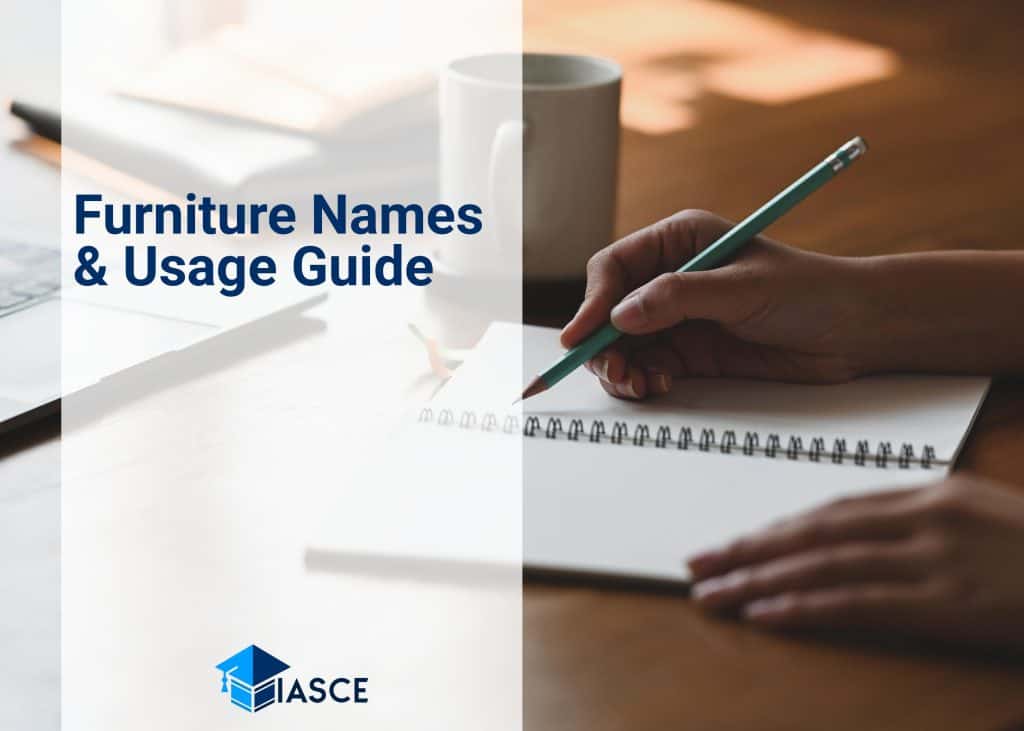In the world of interior design, furniture names can be a tad confusing. If you’ve ever wondered about the difference between a divan and a daybed, or puzzled over what to call your grandmother’s antique cabinet, you’re not alone.
This guide is all about untangling those mystery terms and giving you a clear understanding of English furniture names and their usage. It’s more than just semantics—it’s about appreciating the craftmanship behind each piece and knowing how to incorporate them into your spaces.
By diving into this topic, I’ll help streamline your shopping trips and refine your decorating vocabulary!
English Furniture: A Brief History
Furniture, a staple of our daily lives, carries a rich history. I’m about to take you on a short journey through the evolution of English furniture. Strap yourselves in.
Our story begins back in the Middle Ages when functionality ruled over form. Every piece told its tale – Robust oak tables that stood against time and heavy wooden chests that doubled as seating and storage! It was all about utility back then.
Then entered the Tudor period with its unique charm. Exotic woods like walnut started to replace traditional oak. Intricate carvings adorned furniture pieces, displaying the craftsmanship of artisans during this era.
But it’s the Georgian period where things really heated up! This era saw an explosion of variety in design styles – from Rococo’s ornate flair to Neoclassical’s orderly elegance.
Let me give you an idea:
|
Period |
Wood |
Signature Style |
|---|---|---|
|
Middle Ages |
Oak |
Functional |
|
Tudor |
Walnut |
Decorative carvings |
|
Georgian |
Mahogany |
Variety |
As we moved into Victorian times, mass production came into play thanks to Industrial Revolution advancements. Suddenly, stylish furniture wasn’t just for royalty anymore; it was accessible to everyone!
The 20th century brought fresh waves with Modernism and Art Deco. The focus shifted towards sleek lines, minimalistic designs and innovative use of materials like steel and glass.
So there you have it – English furniture isn’t just about chairs or tables; it’s about centuries of cultural shifts mirrored in woodwork!
Understanding Different Furniture Names and Their Usage
When you’re shopping for new furniture or simply trying to identify pieces you already own, it’s useful to know the names of different types of furniture. Let’s dive into this fascinating world.
Take a chesterfield, for instance. In the United States, we’d typically call this a sofa or couch. Yet in the UK, “chesterfield” is commonly used. However, not every sofa can be called that – only those with deep buttoning, quilted leather upholstery and rolled arms can bear this noble name.
Similarly, let’s consider wardrobes and armoires. Both are freestanding closets traditionally used for storing clothes. They differ mainly in their origin – wardrobes hail from England while armoires come from France – but also in their design details: Wardrobes usually have hanging rods while armoires often feature shelves or drawers alongside a smaller hanging area.
Here are some more examples:
|
English (US) |
Other Terms |
Description |
|---|---|---|
|
Couch/Sofa |
Chesterfield (UK) |
A large piece of furniture for seating multiple people |
|
Wardrobe |
Armoire (France) |
A stand-alone closet often featuring shelves or drawers |
As we proceed further into our guide, don’t forget about regional variations within the US too! Depending on where you are located – East Coast vs Midwest vs West Coast – certain terms might be prevalent over others.
And then there’s the matter of antique versus modern styles. For example, an ottoman is just an upholstered footstool in contemporary usage but was historically a wide seat without backs or arms.
Finally, remember that language evolves over time so what may be considered accurate today could change tomorrow! As such my advice would be to stay flexible and open-minded when discussing furniture nomenclature. It’s all part of the rich tapestry that makes up our language.
Conclusion: Mastering English Furniture Vocabulary
Becoming fluent in the language of furniture doesn’t have to be a daunting task. I’ve noticed that with practice, it gets easier to differentiate between an ottoman and a chaise lounge, or a credenza from an armoire. The secret is consistency in learning and application.
Now you might be wondering – why should I bother? Here’s why:
-
It boosts your confidence when discussing decor.
-
You’ll gain deeper appreciation for craftsmanship.
-
It helps if you’re shopping for furniture online or offline.
Here are my top suggestions to help you master this lingo:
-
Use Flashcards: Create flashcards with the name of each piece on one side and its description on the other. Go through these cards regularly until you’re comfortable with the terms.
-
Apply Your Knowledge: When looking at furniture, whether in person or online, try to identify each piece using its technical term.
-
Read Widely: There’s an abundance of resources out there! Books, blogs, magazines… they all offer valuable insights.
Let’s take a quick recap of some key pieces we covered:
|
Furniture |
Description |
|---|---|
|
Ottoman |
An upholstered footstool or bench often used as a seat |
|
Credenza |
A sideboard or cupboard often found in dining rooms |
|
Armoire |
A large wardrobe or movable cabinet |
Remember, understanding these terms not only enriches your vocabulary but also enhances your knowledge about different styles and periods of furniture design history. So don’t hesitate to dive into this fascinating world – who knows what treasures you might uncover!
On your journey towards mastering English furniture vocabulary, remember it’s okay not to know every single piece right away! Take time to learn gradually; after all, even experts weren’t born knowing everything! As long as you continue fostering your curiosity and applying what you learn consistently, I’m confident that soon enough you’ll be well-versed in all things furniture-related!

